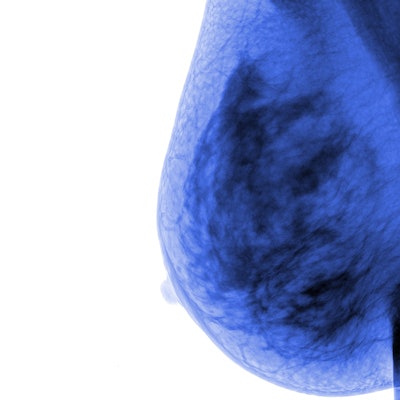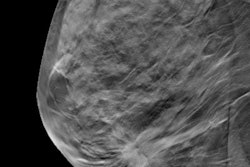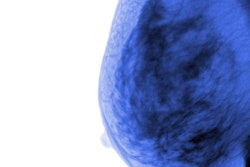
When used for breast screening, synthesized 2D mammography images generated by digital breast tomosynthesis (DBT) are just as useful as images from DBT plus traditional full-field digital mammography (FFDM), according to a study published online March 27 in the American Journal of Roentgenology.
The findings further support the use of synthesized 2D images for breast screening because the synthesized technique results in lower radiation dose than the combination of DBT and FFDM images, wrote a team led by Dr. Katherine Simon of Weill Cornell Medicine in New York City.
"Although still within the allowable Mammography Quality Standards Act levels, the radiation dose of DBT plus FFDM is nearly double that of FFDM alone. ... A proposed solution to increased radiation dose with DBT while retaining a 2D projection is the reconstruction of synthetic 2D images from the tomosynthesis image dataset. Use of synthetic 2D images with DBT reduces the dose 50% compared with the dose of DBT plus FFDM, thus matching the radiation dose obtained by use of FFDM alone," the authors wrote.
With this research, Simon's group sought to fill a knowledge gap.
"There remains a paucity of studies examining whether DBT plus synthetic 2D imaging is comparable in diagnostic accuracy to DBT plus FFDM, particularly in a purely screening U.S. population," the researchers noted.
Simon and colleagues examined the diagnostic performance of radiologists reading synthesized 2D mammography images generated by DBT and those reading traditional 2D FFMD. The study included data from 89 women who underwent screening mammography with DBT, synthesized 2D, and FFDM between August 2014 and January 2016; all had biopsy-proven breast cancer found on screening mammography.
Three readers reviewed DBT plus synthetic 2D or DBT plus FFDM screening mammograms and assigned a BI-RADS category and probability of malignancy to each. The investigators evaluated the diagnostic performance of each combination by calculating sensitivity, specificity, positive predictive value, and negative predictive value. The group also assessed reader performance using the area under the receiver operating characteristic curve (AUC) to estimate the likelihood of malignancy.
Simon and colleagues found the following:
- 96 cancers were identified in the 89 patients.
- Of these cancers, the majority (51%) were calcifications.
- Most of the 89 women had heterogeneously dense breast tissue (64%).
- Of the cancers, 38 were ductal carcinoma in situ (DCIS), three were microinvasive DCIS, and 55 were invasive mammary carcinoma (including both ductal and lobular).
The researchers found no statistically significant difference between DBT with synthesized 2D mammography and DBT with FFDM in any of the performance measures tracked. This was also true for the AUC of both imaging combinations.
| DBT + FFDM vs. synthesized 2D + DBT for breast screening | ||
| DBT + FFDM | Synthesized 2D + DBT | |
| Sensitivity | 0.84 | 0.83 |
| Specificity | 0.94 | 0.96 |
| Positive predictive value | 0.95 | 0.93 |
The study results are good news for women, according to the authors.
"DBT plus synthetic 2D mammography is a viable alternative for decreasing radiation dose without sacrificing diagnostic accuracy," they concluded.




















